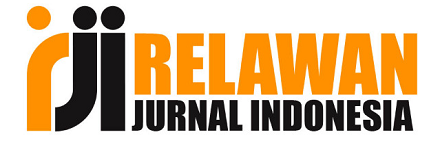SOCIAL MEDIA CONTENT AND RE-PURCHASHING BEHAVIOR: THE MEDIATION ROLE OF E-WOM
DOI:
https://doi.org/10.33474/jimmu.v8i2.19334Keywords:
Social Media Content, Re-Purchasing Behavior, E-WOMAbstract
This research aims to determine the relationship between the role of e- WOM in mediating the relationship between social media content and re-purchasing behavior, while also analyzing the relationship between social media content and e-WOM, and the relationship between e-WOM and re-purchasing behavior. Research using a quantitative approach using partial least squares (PLS). The population in the study were consumers of Deliwafa Store which has branches in Surabaya, Sidoarjo, Gresik, and Malang. The sample in this study was determined using purposive sampling, with a total sample used of 172 respondents. The results of this study indicate that social media content has no significant effect on re-purchasing behavior, social media content has a significant effect on e-WOM, e-WOM has a significant effect on re-purchasing behavior, and e-WOM has a significant effect in mediating the relationship between social media content and re-purchasing behavior.References
Afzoon, S., Rezvani, N., & Khunjush, F. (2021). Enabling the Analysis of Mental Health Patterns Using an Efficient Machine Learning Approach. 25th IEEE International Enterprise Distributed Object Computing Conference Workshops, EDOCW 2021, 59–66. https://doi.org/10.1109/EDOCW52865.2021.00033
Ali, M., Hassan, M., Kifayat, K., Kim, J. Y., Hakak, S., & Khan, M. K. (2023). Social Media Content Classification and Community Detection Using Deep Learning and Graph Analytics. Technological Forecasting and Social Change, 188. https://doi.org/10.1016/j.techfore.2022.122252
Appe, S., & Oreg, A. (2021). Does Effective Altruism Drive Private Cross-Border Aid? A Qualitative Study of American donors to grassroots INGOs. Third World Quarterly, 42(12), 2841–2862. https://doi.org/10.1080/01436597.2021.1969910
Arapostathis, S. G. (2021). The Ianos Cyclone (September 2020, Greece) from Perspective of Utilizing Social Networks for DM. In M. Y., V. D., & Z. P. (Eds.), 5th IFIP WG 5.15 International Conference on Information Technology in Disaster Risk Reduction, ITDRR 2020 (Vol. 622, pp. 160–169). Springer Science and Business Media Deutschland GmbH. https://doi.org/10.1007/978-3-030-81469-4_13
Balroo, S. A., & Saleh, M. A. H. (2019). Perceived eWOM and Students’ University Enrolment Intentions: The Corporate Image as a Mediator. Journal of Economics, Management and Trade, 24(1), 1–14. https://doi.org/10.9734/jemt/2019/v24i130152
Belanche, D., Flavián, C., & Pérez-Rueda, A. (2020). Consumer Empowerment in Interactive Advertising and E-WOM Consequences: The PITRE Model. In Journal of Marketing Communications (Vol. 26, Issue 1). https://doi.org/10.1080/13527266.2019.1610028
Bigne, E., Simonetti, A., Ruiz, C., & Kakaria, S. (2021). How Online Advertising Competes with User-Generated Content in TripAdvisor. A Neuroscientific Approach. Journal of Business Research, 123, 279–288. https://doi.org/10.1016/j.jbusres.2020.10.010
Buchanan, J., Kim, H., & Eickhoff-Shemek, J. M. (2023). Fitness/Wellness Professionals as Social Media Content Creators and Influencers Health and Legal Risks to Consider. ACSM’s Health and Fitness Journal, 27(1), 41–44. https://doi.org/10.1249/FIT.0000000000000829
Casola, W. R., Rushing, J., Futch, S., Vayer, V., Lawson, D. F., Cavalieri, M. J., Larson, L. R., & Peterson, M. N. (2020). How do YouTube Videos Impact Tolerance of Wolves? Human Dimensions of Wildlife, 25(6), 531–543. https://doi.org/10.1080/10871209.2020.1773582
Christian, B., & Wiradinata, T. (2022). The Implementation of Content Planner Application with MobileNetV2 Classification for Hashtag Automation. International Journal of Computers and Their Applications, 29(3), 181–189.
Chu, S. C., & Kim, Y. (2011). Determinants of Consumer Engagement in Electronic Word-of-Mouth (E-WOM) in Social Networking Sites. International Journal of Advertising, 30(1), 47–75. https://doi.org/10.2501/IJA-30-1-047-075
Creswell, J. W. (2017). Penelitian Kualitatif & Desain Riset (S. Z. Qudsy (ed.); ke-3). Pustaka Pelajar.
Dangi, D., Bhagat, A., & Dixit, D. K. (2022). Sentiment Analysis of Social Media Data Based on Chaotic Coyote Optimization Algorithm Based Time Weight-Adaboost Support Vector Machine Approach. Concurrency and Computation: Practice and Experience, 34(3). https://doi.org/10.1002/cpe.6581
Dedeoglu, B. B. (2019). Are Information Quality and Source Credibility Really Important for Shared Content on Social Media?: The Moderating Role of Gender. International Journal of Contemporary Hospitality Management, 31(1), 513–534. https://doi.org/10.1108/IJCHM-10-2017-0691
Dewberry, D. R. (2019). The False Dichotomy of Message Desirability in Third-Person Effect Scholarship. Qualitative Research Reports in Communication, 20(1), 1–8. https://doi.org/10.1080/17459435.2019.1572643
Dušan, M., Visar, R., Sebastian, M., Prateek, K., & Rahul, C. (2022). Effects of Sociodemographic Variables on Electronic Word of Mouth: Evidence from Emerging Economies. MUNI ECON Working Papers, 2. https://doi.org/10.5817/wp_muni_econ_2022-02
Friedrich, T. (2015). Analyzing the Factors that Influence Consumers’ Adoption of Social Commerce - A Literature Review. 21st Americas Conference on Information Systems, AMCIS 2015.
Gabore, S. M. (2020). Western and Chinese Media Representation of Africa in COVID-19 news coverage. Asian Journal of Communication, 30(5), 299–316. https://doi.org/10.1080/01292986.2020.1801781
Gallarza, M. G., Fayos-Gardó, T., Arteaga-Moreno, F., Servera-Francés, D., & Floristán-Imizcoz, E. (2020). Different Levels of Loyalty Towards the Higher Education Service: Evidence from a Small University in Spain. International Journal of Management in Education, 14(1), 36–48. https://doi.org/10.1504/IJMIE.2020.103825
Gomez-Suarez, M., & Veloso, M. (2022). Enhancing social media engagement by the hospitality industry: The power of customer experience dimensions. Journal of Vacation Marketing. https://doi.org/10.1177/13567667221135195
Grace Phang, I., Ng, J. E., & Fam, K. S. (2021). Customer Engagement and Loyalty Issues in Omnichannel Fast-Food Industry. International Journal of Business and Society, 22(3), 1429–1448. https://doi.org/10.33736/ijbs.4313.2021
Hodson, J., & Dale, A. (2018). Sharing Sustainability Stories: Case Study of Social Media Content Curation for Canada Research Connections. Journal of Digital and Social Media Marketing, 6(3), 198–210.
Iqbal, S., Khan, F., Khan, H. U., Iqbal, T., & Shah, J. H. (2022). Sentiment Analysis of Social Media Content in Pashto Language using Deep Learning Algorithms. Journal of Internet Technology, 23(7), 1669–1677. https://doi.org/10.53106/160792642022122307021
Jain, P. K., Pamula, R., & Yekun, E. A. (2022). A Multi-Label Ensemble Predicting Model to Service Recommendation from Social Media Contents. Journal of Supercomputing, 78(4), 5203–5220. https://doi.org/10.1007/s11227-021-04087-7
Kanan, T., Mughaid, A., Al-Shalabi, R., Al-Ayyoub, M., Elbes, M., & Sadaqa, O. (2022). Business Intelligence Using Deep Learning Techniques for Social Media Contents. Cluster Computing. https://doi.org/10.1007/s10586-022-03626-y
Khan, A., Fleming, E., Schofield, N., Bishop, M., & Andrews, N. (2021). A Deep Metric Learning Approach to Account Linking. 2021 Conference of the North American Chapter of the Association for Computational Linguistics: Human Language Technologies, NAACL-HLT 2021, 5275–5287.
Kostov, T. (2020). Impact of Social Media Marketing on Consumer Behavior. In JAMK University of Applied Sciences.
Lee, Z. W. Y., Chan, T. K. H., Chong, A. Y. L., & Thadani, D. R. (2019). Customer Engagement Through Omnichannel Retailing: The Effects of Channel Integration Quality. Industrial Marketing Management, 90–101. https://doi.org/10.1016/j.indmarman.2018.12.004
Lim, X. J., Cheah, J. H., Waller, D. S., Ting, H., & Ng, S. I. (2020). What S-Commerce Implies? Repurchase Intention and its Antecedents. Emerald Insigh, 38(6), 760–776. https://doi.org/10.1108/MIP-03-2019-0145
MajlesiRad, Z., & Shoushtari, A. H. H. pour. (2020). Analysis of the Impact of Social Network Sites and E-wom Marketing, Considering the Reinforcing Dimensions of the Concept of Luxury, on Tendency Toward Luxury Brand. Future Business Journal, 6(1), 1–19. https://doi.org/10.1186/s43093-020-00025-w
Moorthy, V., Kiran, P., Banerjee, J., & Krishna Kishore, S. V. (2022). Investigating the Impact of Emotional Contagion on Customer Attitude, Trust and Brand Engagement: A Social Commerce Perspective. International Journal of Electronic Commerce Studies, 13(3), 99–118. https://doi.org/10.7903/ijecs.2049
Morgan, A., & Wilk, V. (2021). Social Media Users’ Crisis Response: A Lexical Exploration of Social Media Content in an International Sport Crisis. Public Relations Review, 47(4). https://doi.org/10.1016/j.pubrev.2021.102057
Nilles, C., Pringsheim, T. M., & Martino, D. (2022). The Recent Surge of Functional Movement Disorders: Social Distress or Greater Awareness? Current Opinion in Neurology, 35(4), 485–493. https://doi.org/10.1097/WCO.0000000000001074
Pace, L. A., Herbert, A. S., Munir, A., & Malik, R. D. (2021). Analysis of Pelvic Organ Prolapse-Related Content on Pinterest. Female Pelvic Medicine and Reconstructive Surgery, 27(2), E372–E376. https://doi.org/10.1097/SPV.0000000000000940
Pawar, V., & Jose, D. V. (2022). An AI-Based Forensic Model for Online Social Networks. In S. S., G. X.-Z., K. J.V., & M. D. (Eds.), International Conference on Data Science, Computation, and Security, IDSCS 2022 (Vol. 462, pp. 209–218). Springer Science and Business Media Deutschland GmbH. https://doi.org/10.1007/978-981-19-2211-4_18
Prahiawan, W., Fahlevi, M., Juliana, J., Purba, J. T., & Tarigan, S. A. A. (2021). The Role of E-Satisfaction, E-Word of Mouth and E-Trust on Repurchase Intention of Online Shop. International Journal of Data and Network Science, 5(4), 593–600. https://doi.org/10.5267/j.ijdns.2021.8.008
Rahman, Z., Suberamanian, K., Zanuddin, H., Moghavvemi, S., & Md Nasir, M. H. N. (2016). Social Media Engagement Metrics Analysis - “Study on Fan Page Content.” Journal of Telecommunication, Electronic and Computer Engineering, 8(8), 71–76.
Ramzan, U., & Syed, A. R. (2018). Journal of Internet Banking and Commerce Role of Content Based Social Media Marketing in Building Customer Loyalty and Motivating Consumers to Forward Content. Journal of Internet Banking and Commerce, 23(3).
Rezaei, S., & Emmi, M. (2017). Apps-Commerce in Emerging Markets: Insights and Future Business Models. In Apps Management and E-Commerce Transactions in Real-Time (pp. 51–69). IGI Global. https://doi.org/10.4018/978-1-5225-2449-6.ch003
Rezaei, S., Wee, C. H., & Valaei, N. (2017). Essential of Apps Marketing Implementation and E-Commerce Strategies: Apps Users’ Decision-Making Process. In Apps Management and E-Commerce Transactions in Real-Time (pp. 141–158). IGI Global. https://doi.org/10.4018/978-1-5225-2449-6.ch006
Sagynbekova, S., Ince, E., Ogunmokun, O. A., Olaoke, R. O., & Ukeje, U. E. (2021). Social Media Communication and Higher Education Brand Equity: The Mediating Role of E-WOM. Journal of Public Affairs, 21(1), 1173–1182. https://doi.org/10.1002/pa.2112
Samara, F., Ondieki, S., Hossain, A. M., & Mekni, M. (2021). Online Social Network Interactions (OSNI): A Novel Online Reputation Management Solution. 7th International Conference on Engineering and Emerging Technologies, ICEET 2021. https://doi.org/10.1109/ICEET53442.2021.9659615
Schivinski, B. (2021). Eliciting Brand-Related Social Media Engagement: A Conditional Inference Tree Framework. Journal of Business Research, 130, 594–602. https://doi.org/10.1016/j.jbusres.2019.08.045
Schuckert, M., Liang, S., Law, R., & Sun, W. (2019). How do Domestic and International High-end Hotel Brands Receive and Manage Customer Feedback? International Journal of Hospitality Management, 77, 528–537. https://doi.org/10.1016/j.ijhm.2018.08.017
Seller, M. L., & Laurindo, F. J. B. (2018). Brand Community or Electronic Word-of-Mouth: What’s the Goal of Company Presence in Social Media? Gestao e Producao, 25(1), 191–203. https://doi.org/10.1590/0104-530X2244-16
Seo, E. J., Park, J. W., & Choi, Y. J. (2020). The effect of Social Media Usage Characteristics on E-WOM, Trust, and Brand Equity: Focusing on Users of Airline Social Media. Sustainability (Switzerland), 12(4), 1–18. https://doi.org/10.3390/su12041691
Tandon, A., Aakash, A., & Aggarwal, A. G. (2020). Impact of E-WOM, Website Quality, and Product Satisfaction on Customer Satisfaction and Repurchase Intention: Moderating Role of Shipping and Handling. International Journal of System Assurance Engineering and Management, 11(s2), 349–356. https://doi.org/10.1007/s13198-020-00954-3
Tiago, F., Couto, J., Faria, S., & Borges-Tiago, T. (2018). Cruise Tourism: Social Media Content and Network Structures. Tourism Review, 73(4), 433–447. https://doi.org/10.1108/TR-10-2017-0155
Vijaya, P., & Sivakoti Reddy, M. (2019). A Study on the Moderating Role of Trust in Determining the Green Purchase Intentions: Empirical Evidence from Indian Automobile Sector. Journal of Advanced Research in Dynamical and Control Systems, 11(11), 39–47. https://doi.org/10.5373/JARDCS/V11I11/20193166
Voorn, R. J. J., van der Veen, G., van Rompay, T. J. L., Hegner, S. M., & Pruyn, A. T. H. (2021). Human Values as Added Value(s) in Consumer Brand Congruence: a Comparison with Traits and Functional Requirements. Journal of Brand Management, 28(1), 48–59. https://doi.org/10.1057/s41262-020-00210-w
Wakefield, L. T., & Bennett, G. (2018). Sports Fan Experience: Electronic Word-of-Mouth in Ephemeral Social Media. Sport Management Review, 21(2), 147–159. https://doi.org/10.1016/j.smr.2017.06.003
Wang, X., Cheng, M., Li, S., & Jiang, R. (2023). The Interaction Effect of Emoji and Social Media Content on Consumer Engagement: A Mixed Approach on Peer-to-Peer Accommodation Brands. Tourism Management, 96. https://doi.org/10.1016/j.tourman.2022.104696
Wang, Y., Peng, K. L., & Lin, P. M. C. (2021). Resilience of Tourists’ Repurchase Intention During the COVID-19 Pandemic: The Shared Accommodation Sector. Sustainability (Switzerland), 13(21), 1–14. https://doi.org/10.3390/su132111580
Yu, C. Z., Chan, T. J., & Zolkepli, I. A. (2023). Bridging Social Media Content and Re-Purchasing Behavior: The Mediation Role of Interactivity and E-WOM. International Journal of Data and Network Science, 7(1), 251–264. https://doi.org/10.5267/j.ijdns.2022.10.008
Zhang, M., Hu, M., Guo, L., & Liu, W. (2017). Understanding Relationships
Among Customer Experience, Engagement, and Word-of-Mouth Intention on Online Brand Communities: The Perspective of Service Ecosystem. Internet Research, 27(4), 839–857. https://doi.org/1
Downloads
Published
Issue
Section
License
Copyright (c) 2023 Jurnal Ilmu Manajemen (JIMMU)

This work is licensed under a Creative Commons Attribution 4.0 International License.

Ciptaan disebarluaskan di bawah Lisensi Creative Commons Atribusi 4.0 Internasional.










